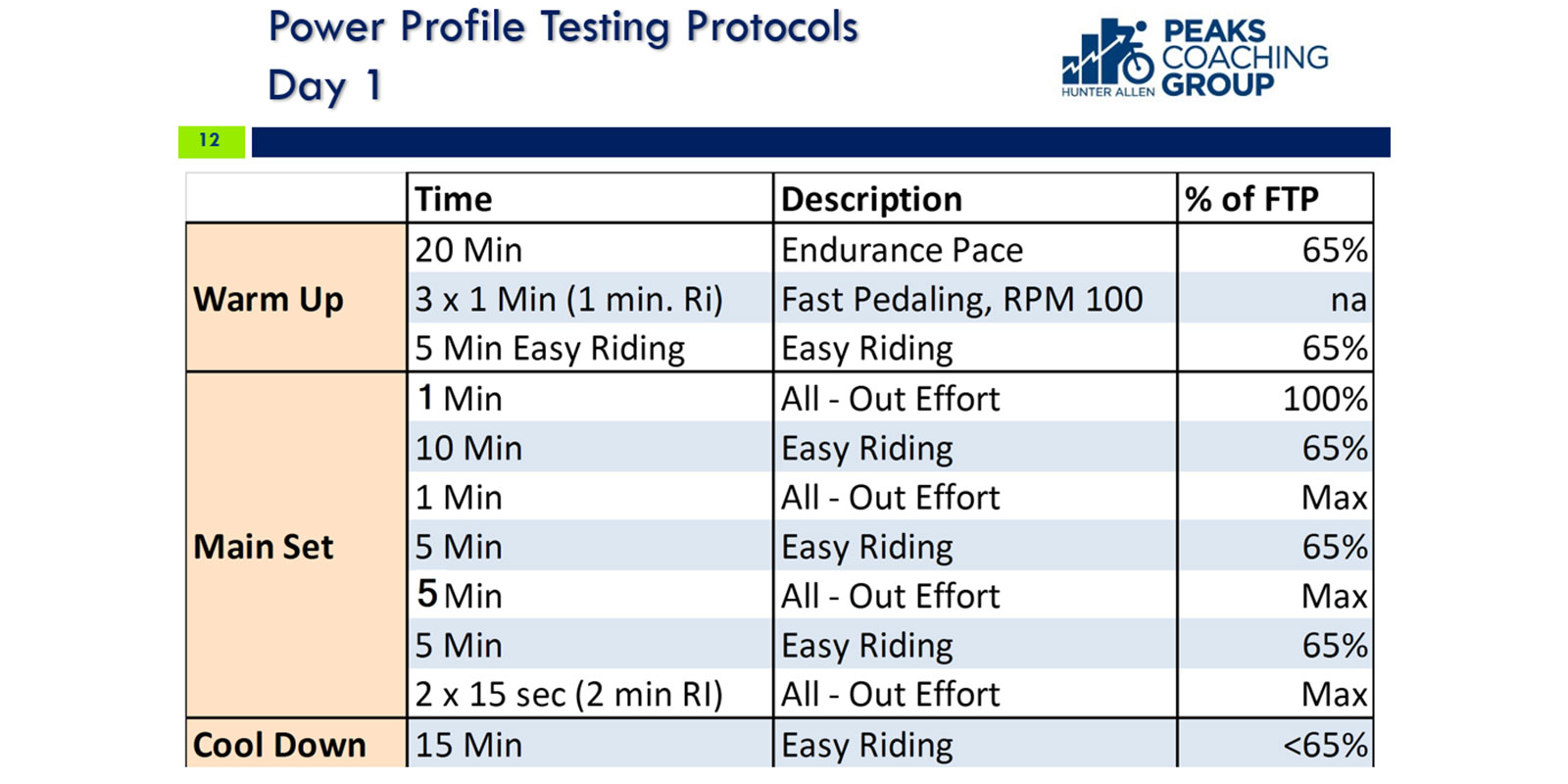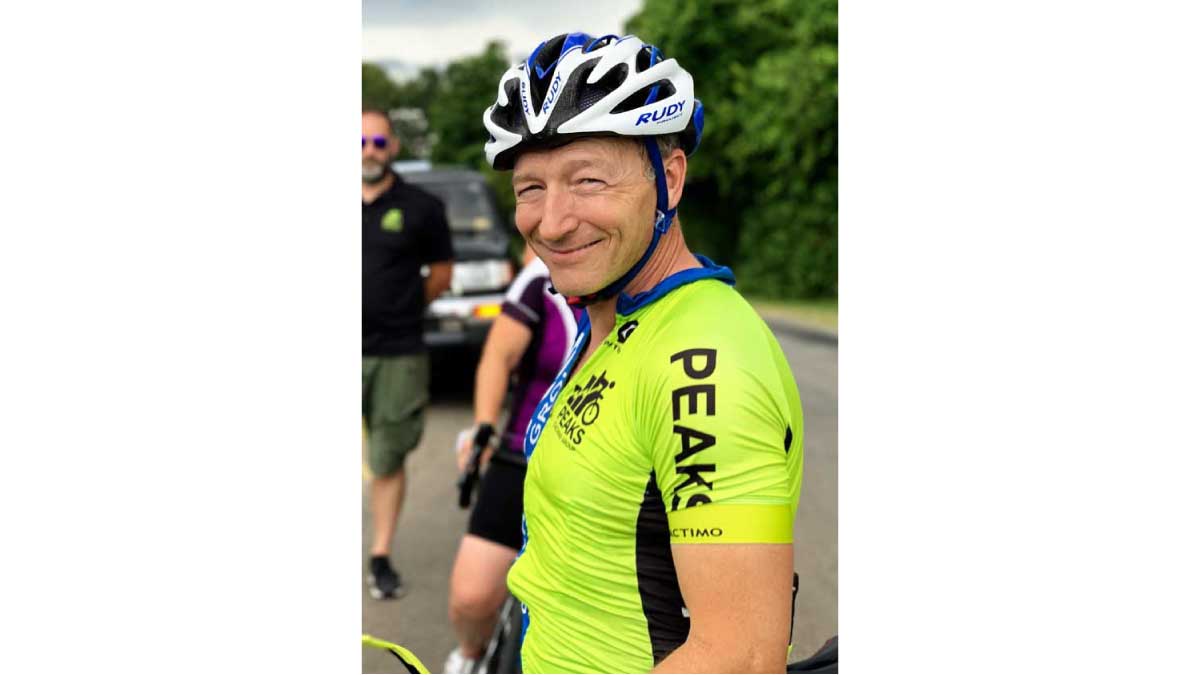The Power of Training with a Power Meter
Tips & Trainingby Hunter Allen
Cycling is a sport where every pedal stroke counts. It's a symphony of endurance, strength, and strategy performed on two wheels, often called a “chess game” on wheels. For riders seeking to elevate their performance, the integration of technology has become paramount. Among the various tools available to cyclists, none hold as much potential for refining training and enhancing performance as the power meter.

Your first step in your power meter journey
In the realm of cycling, the Functional Threshold Power (FTP) test stands as a pivotal metric, akin to a compass guiding riders towards optimal performance. Your FTP, a cornerstone of training with a power meter, offers a precise gauge of an athlete's sustainable power output over approximately 60 minutes. FTP is the single most important physiological determinant of performance in events ranging from as short as a 3 km pursuit to as long as a 3-week stage race.
Functional Threshold Power is defined as the highest power a rider can maintain in a quasi-steady state without fatiguing for approximately 60 minutes. When power exceeds FTP, fatigue will occur much sooner, whereas power just below FTP can be maintained much longer.
This means that a rider doing roughly a 60-minute time trial, their average watts for this time trial will be their FTP. It's a physiological marker, representing a delicate balance between aerobic and anaerobic energy systems.
FTP serves as a starting point for establishing training zones, shaping workouts, and measuring progress over time. You must complete this test first, so that you will know where your current fitness lies and then you will also be able to re-test every 8 weeks so that you can easily quantify your improvement and make changes to your training and training zones as needed.
If you’re curious to know how to run an FTP test, make sure you read our dedicated article.
Leveraging FTP data for training
FTP isn't merely a number; it's a compass guiding training, which allows you, among other things, to establish your training zones.
The Coggan Classic Power Zones were created by Dr. Andrew R. Coggan and are how you should begin to define your training zones. They encompass various intensity levels, from recovery rides to threshold efforts and beyond.
Each zone corresponds to a specific percentage range of an athlete's FTP.
For instance, Zone 1 denotes easy spinning and active recovery, Zone 2 represents endurance efforts, while Zones 4 and 5 focus on pushing the limits of lactate threshold and Vo2 Max, respectively.
By precisely targeting these zones, riders can tailor workouts to address specific physiological adaptations, optimizing their training to achieve desired outcomes.

Re-testing and re-setting of Zones
The beauty of FTP lies in its malleability. As athletes progress or adapt and become stronger and stronger, their FTP improves. Regular reassessment (Every 8 weeks) through subsequent FTP tests ensures training remains aligned with current physiological capabilities.
By tracking changes in FTP over time, riders gauge progress, adapt training regimens, and set new performance targets.
Additional testing: The power profile test!
This is an additional test that allows the rider to test their strengths and weaknesses.
This test is a test of your 1 minute, 5 minute and 5 second power. These are maximal efforts and also should be done when you are fresh.
You should do them in the protocol below.

Once you have done these tests, then you should upload the data into a program like TrainingPeaks Software, it will display the Power Profile Chart, and the shape of the chart defines the type of rider you are: Sprinter, Time Trialist/Climber, All-Arounder or Pursuiter.
For more information on data analysis and all the ins and outs of what the metrics mean and how to use them, check out the book, “Training and Racing with a Power Meter” by Hunter Allen and Dr. Andrew R. Coggan.
Applying science to training
The marriage of science and sport is evident in the realm of power-based training.
Concepts like periodization, where training is divided into distinct phases to peak at specific times, are honed with precision through power meters. Using Training Stress Score (TSS), which is an important measure of the training stress of each workout, allows the rider to compile this information into the Performance Manager Chart inside TrainingPeaks Software and then predict peaks of fitness and the ideal times for their races. Using the Performance Manager and TSS allows riders to structure their training blocks, manipulating intensity and volume, while carefully monitoring fatigue and recovery.
Moreover, the use of power meters like Assioma allows for targeted workouts aimed at improving specific physiological systems. Whether it's enhancing aerobic capacity, bolstering muscular endurance, or refining sprinting prowess, workouts are tailored to elicit specific adaptations, amplifying overall performance.
Benefits beyond performance
Beyond the realms of competitive cycling, power meters offer benefits to riders of all levels. The common denominator is that you have to want to improve!
Power meters provide a tangible means of tracking progress, fostering motivation, and instilling a sense of accomplishment. Cyclists aiming to complete their first-century ride or conquer challenging terrains can leverage power meters to optimize their training and enhance their overall experience on the bike, even enhancing their nutrition while riding.
Furthermore, power meters facilitate a more comprehensive understanding of pacing strategies. Whether tackling a time trial, a mountain climb, or a criterium race, the ability to gauge effort output in real-time empowers cyclists to pace themselves efficiently, maximizing performance without succumbing to premature fatigue.
Embracing the power meter: A journey ahead
Training with a power meter isn't merely about the device itself; it's a journey towards self-discovery and athletic refinement. It requires commitment, consistency, and a willingness to embrace the nuances of data-driven training. The learning curve might seem steep initially, but the rewards in terms of performance gains and personal satisfaction are immeasurable.
In the realm of cycling, the power meter stands as a beacon of progress and innovation. Its integration into training methodologies has ushered in an era where cyclists can unlock their full potential through informed, targeted, and scientifically grounded approaches to training.
So, put your kit on, clip in, and let the power meter guide you towards new horizons of cycling prowess. With every pedal stroke measured and analyzed, you embark on a journey where the pursuit of excellence meets the precision of technology.

Hunter Allen has FTP online training programs available at FTP Archives - Shop Peaks Coaching Group.
He is the co-author of “Training and Racing with a Power Meter”, “Cutting Edge Cycling” and “Triathlon Training with Power”.
They are available at www.shoppeaks.com.
You can contact Hunter directly at www.PeaksCoachingGroup.com for personal coaching and camps.
Read the other articles
- The “Demands” of MTB: Should I Pedal Harder or Pedal Faster?
- Why Train with a Power Meter for MTB?
- Training with a Power Meter: How to Get Started
- How to Use a Power Meter to Your Advantage in a Triathlon
- Off-Season Training
- How to Improve Your FTP
- Power Training Zones for Cycling
- Why Train with a Pedal-based Power Meter?
- The FTP Test: What is it and How to Do it
